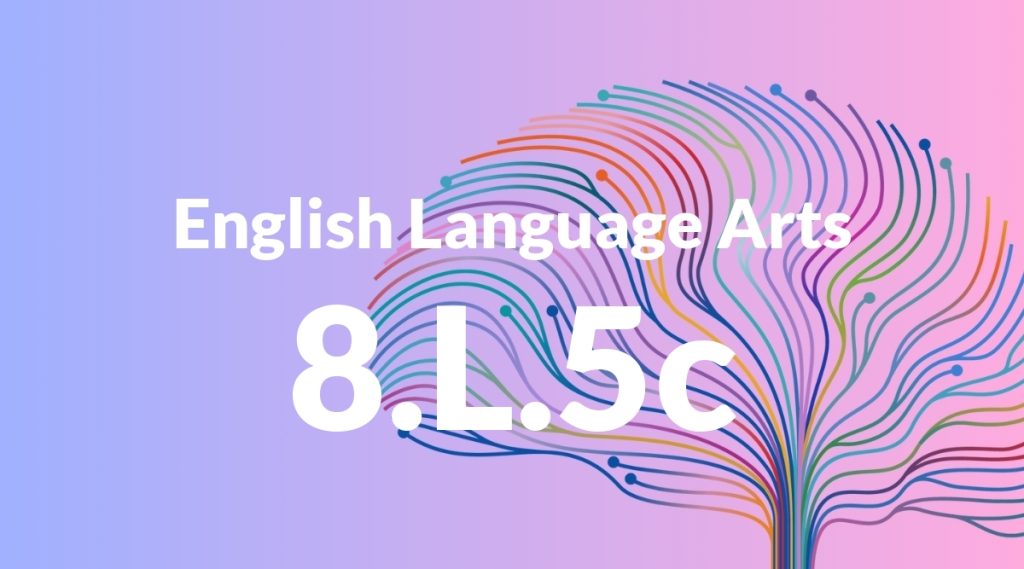Standard: 8.L.5c – Distinguish among the connotations (associations) of words with similar denotations (definitions) (e.g., bullheaded, willful, firm, persistent, resolute).
Grade level: Grade 8
Subject: English Language Arts
Domain: Language
Teacher Overview
This standard emphasizes the importance of understanding the nuanced meanings of words with similar definitions. Mastery of this skill enhances students’ ability to choose words that convey precise meanings and emotional tones, which is crucial for effective communication and critical thinking. Students should be familiar with basic word definitions and have practiced identifying synonyms and antonyms.
After mastering this standard, students will be able to use precise language to convey specific meanings and emotional tones, enhancing their writing and speaking skills.
Common Misconception 1
A common misconception is that words with similar definitions can be used interchangeably. This is incorrect because each word carries its own connotation, which can significantly alter the meaning of a sentence.
Intervention 1
To address this misconception, provide students with contextual examples where different word choices change the meaning or tone of a sentence. Encourage discussions about why a particular word is more appropriate in a given context.
Common Misconception 2
Another misconception is that students may not recognize the subtle emotional impacts of different word choices. They might overlook how connotations can influence the reader’s or listener’s perception.
Intervention 2
Use visual aids and role-playing scenarios to help students grasp the emotional nuances of different words. Encourage them to express how they feel about certain word choices in various contexts.
Prerequisite Knowledge
Students should understand basic definitions of words and have experience in identifying synonyms and antonyms.
Subsequent Knowledge
Students will develop skills in using precise language for effective communication and critical analysis of texts.
Instructional Activities
- Create a word map with synonyms and their connotations.
- Analyze characters in a story based on the words used to describe them.
- Write sentences using different words with similar definitions and discuss the impact.
- Role-play scenarios using words with different connotations.
- Compare and contrast media messages based on word choices.




